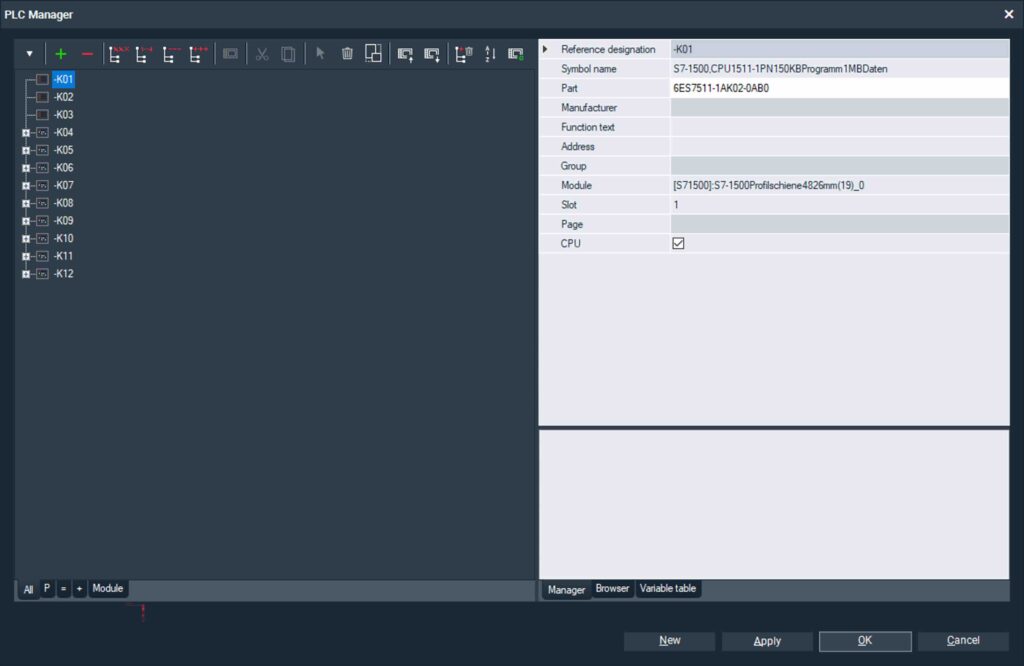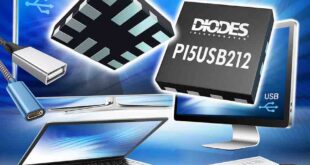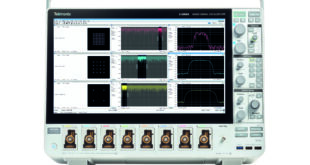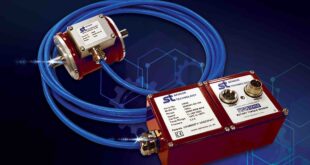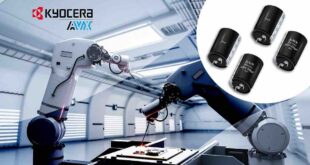When it comes to designing electrical systems for plant construction and machine building projects, using a tool that can account for device integration and networking requirements enables a truly holistic, smart approach. To this end, WSCAD has developed an interface that connects its Electrical CAD solution with Siemen’s TIA Portal and TIA Selection Tool. This allows electrical designers and PLC programmers to collaboratively advance their machine-building projects quickly and efficiently. Circuit diagrams as well as design and programming information for components and assemblies are available without restriction throughout all stages of development. As a result, the bidirectional flow of engineering data can reduce project times by up to 40%.
Siemens is focused on the end-to-end digitalisation of value chains and as such adds digital representations of its products, including up-to-date component and material lists, to its licenced Totally Integrated Automation (TIA) Portal. This portal acts as the central data hub for the entire Siemens automation environment. Complementary to this, the free TIA Selection Tool can be used by electrical engineers, for example, to select and validate programmable logic controllers (PLCs).
Users of the WSCAD Electrical CAD Solution can now access Siemens data from both information sources for their electrical engineering projects. By utilising current item and material lists, as well as the parameters of the individual I/O channels of the electrical assemblies, circuit diagrams can be quickly set up in compliance with relevant standards.
The import of data for the creation of circuit diagrams is carried out using the Electrical Engineering module in the WSCAD Electrical CAD Solution. The results then appear in the PLC Manager and can be immediately integrated into the project. If the data originates from the TIA Selection Tool, the designer can easily create the required I/O channels by accessing the local parts database or the online data library on wscaduniverse.com, which always contains up-to-date symbols and parts data. If the data was created in the TIA Portal, WSCAD adopts the I/O channels created there.
“TIA Portal not only knows which assemblies fit together and the dependencies between the various components, but also which I/O slots there are and what properties they can carry,” says Michael Hermann, Product Manager at WSCAD.
Bidirectional data exchange
Electrical CAD design also demands the optimal placement and connection of all main and secondary elements, as well as the documentation of all terminal charts, cables, connections and material lists. Once the electrical schematic is available, the designer transfers the file back to the TIA Portal for programming of the controller. But that’s not all – since the Electrical CAD solution from WSCAD can be used across disciplines, there is further added value. For example, the data points recorded in the Building Automation module, including their values over the I/O channels, are available in the TIA Portal.
This bidirectional data exchange offers even more advantages. For example, if the programmer changes several 8-port I/O cards into a 32-port card in TIA Portal, this is immediately visible in the electrical schematic when it is re-imported into WSCAD CAD software. Material lists and documentation are also updated. In this case, the cross-disciplinary approach of the WSCAD solution comes into play: WSCAD immediately transfers every change in the schematic to the control cabinet layout. If electrical designers change or add channel designations or comment texts, these are also available in the TIA Portal.
The interaction with the TIA Portal also reduces the potential for errors in electrical engineering and shortens planning times. When electrical designers create the controller in the circuit diagram, they must specify which modules are present, the number of I/O cards and how many slots they have as well as the signals and their channels. The electrical engineering software does not check whether the port of an I/O card can process a certain signal or not. However, when the project is transferred to the TIA Portal for programming it flags up incorrect settings. Looking from the other perspective, I/O ports defined in the TIA Portal will be applied by the electrical engineering software.
Choices, choices
The flexibility offered by the opening up of WSCAD’s electrical engineering solution to the Siemens automation environment is providing design engineers with two routes to approach projects. One option is for the designer to undertake the complete configuration using a material list from the TIA Selection Tool and to develop the electrical schematic based on this data in the electrical engineering system, send the circuit layout back to the TIA Portal and then finalise the electrical design including any changes through programming.
However, from WSCAD’s point of view, it is better to create and configure the controller in the TIA Portal: “When we developed the interface, we worked with both the TIA Selection Tool as well as the TIA Portal. During this time, we noticed that some assemblies existed in the TIA Selection Tool that the TIA Portal does not yet recognise,” recalls Michael Hermann. “Therefore, it seems more logical to us to create the controller in the TIA Portal and export it from there to WSCAD. This way, possible discrepancies are avoided and the I/O channels are already created for users, meaning that this information is also exported and imported as well.”
 Engineer News Network The ultimate online news and information resource for today’s engineer
Engineer News Network The ultimate online news and information resource for today’s engineer

